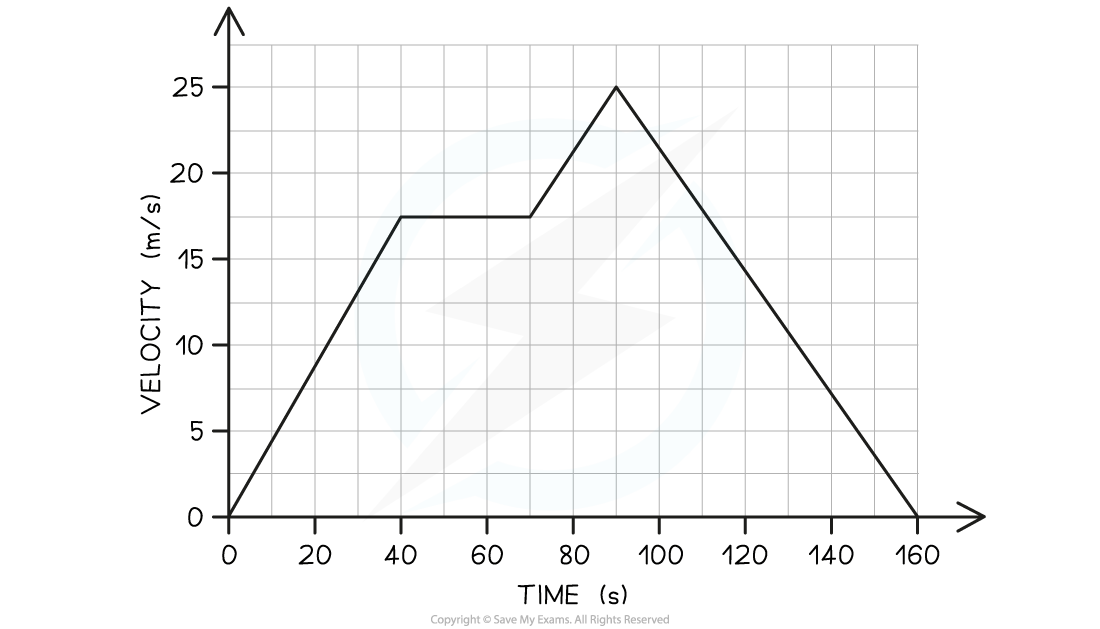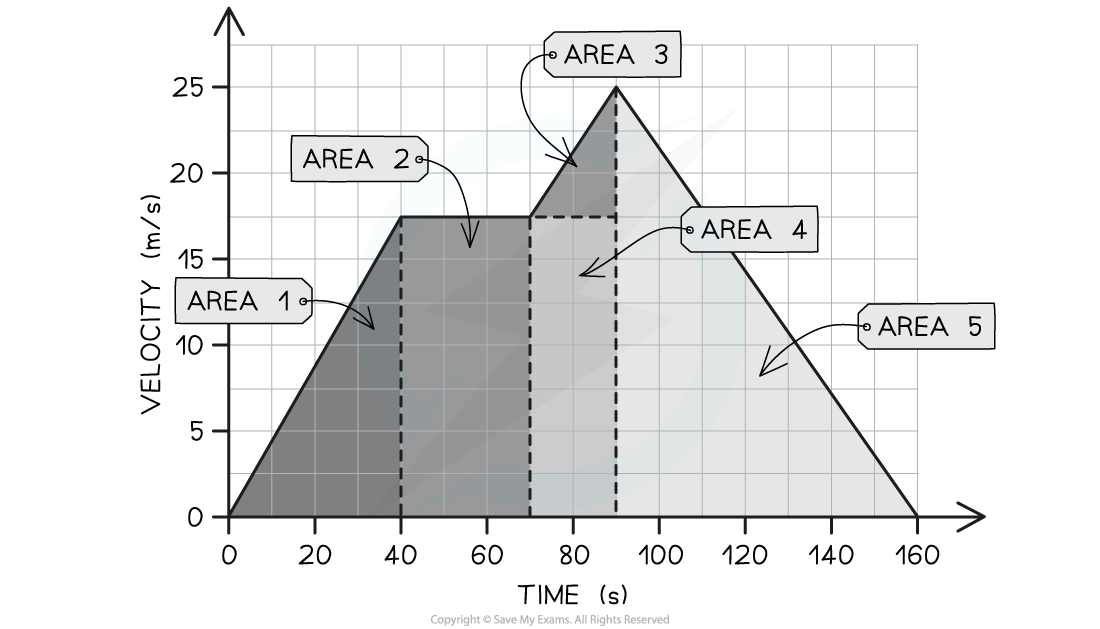Area under a Velocity-Time Graph (Edexcel GCSE Physics) : Revision Note
Did this video help you?
Area under a Velocity-Time Graph
The area under a velocity-time graph represents the displacement (or distance travelled) by an object

The displacement, or distance travelled, is represented by the area beneath the graph
If the area beneath the graph forms a triangle (i.e. the object is accelerating or decelerating), then the area can be determined by using the following formula:
Area = ½ × Base × Height
If the area beneath the graph forms a rectangle (i.e. the object is moving at a constant velocity), then the area can be determined by using the following formula:
Area = Base × Height
Determining Distance from a Velocity-Time Graph
Enclosed areas under velocity-time graphs represent total displacement (or total distance travelled)

Three enclosed areas (two triangles and one rectangle) under this velocity-time graph represents the total distance travelled
If an object moves with constant acceleration, its velocity-time graph will comprise of straight lines
In this case, calculate the distance travelled by working out the area of enclosed rectangles and triangles as in the image above
Worked Example
The velocity-time graph below shows a car journey which lasts for 160 seconds.

Calculate the total distance travelled by the car on this journey.
Answer:
Step 1: Recall that the area under a velocity-time graph represents the distance travelled
In order to calculate the total distance travelled, the total area underneath the line must be determined
Step 2: Identify each enclosed area
In this example, there are five enclosed areas under the line
These can be labelled as areas 1, 2, 3, 4 and 5, as shown in the image below:

Step 3: Calculate the area of each enclosed shape under the line
Area 1 = area of a triangle = ½ × base × height = ½ × 40 × 17.5 = 350 m
Area 2 = area of a rectangle = base × height = 30 × 17.5 = 525 m
Area 3 = area of a triangle = ½ × base × height = ½ × 20 × 7.5 = 75 m
Area 4 = area of a rectangle = base × height = 20 × 17.5 = 350 m
Area 5 = area of a triangle = ½ × base × height = ½ × 70 × 25 = 875 m
Step 4: Calculate the total distance travelled by finding the total area under the line
Add up each of the five areas enclosed:
total distance = 350 + 525 + 75 + 350 + 875
total distance = 2175 m

You've read 0 of your 5 free revision notes this week
Sign up now. It’s free!
Did this page help you?
